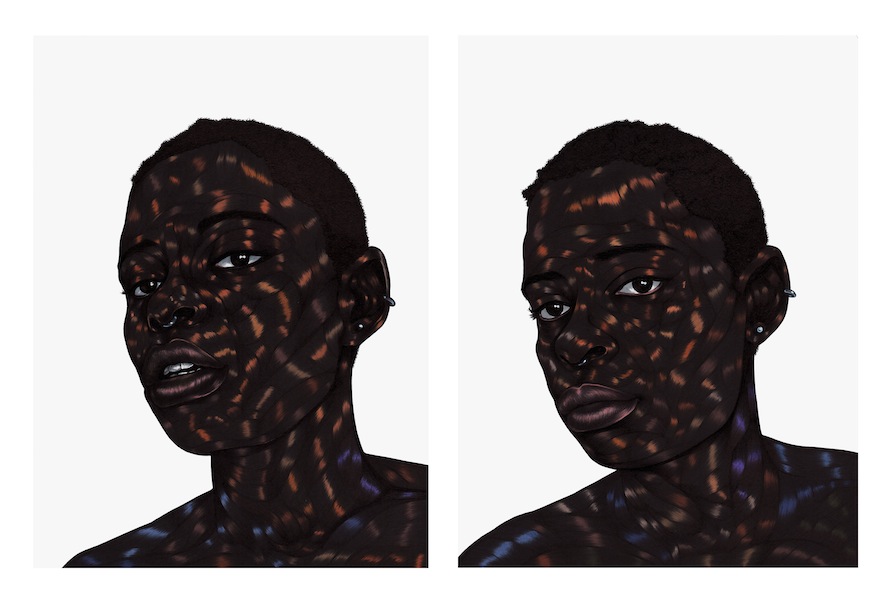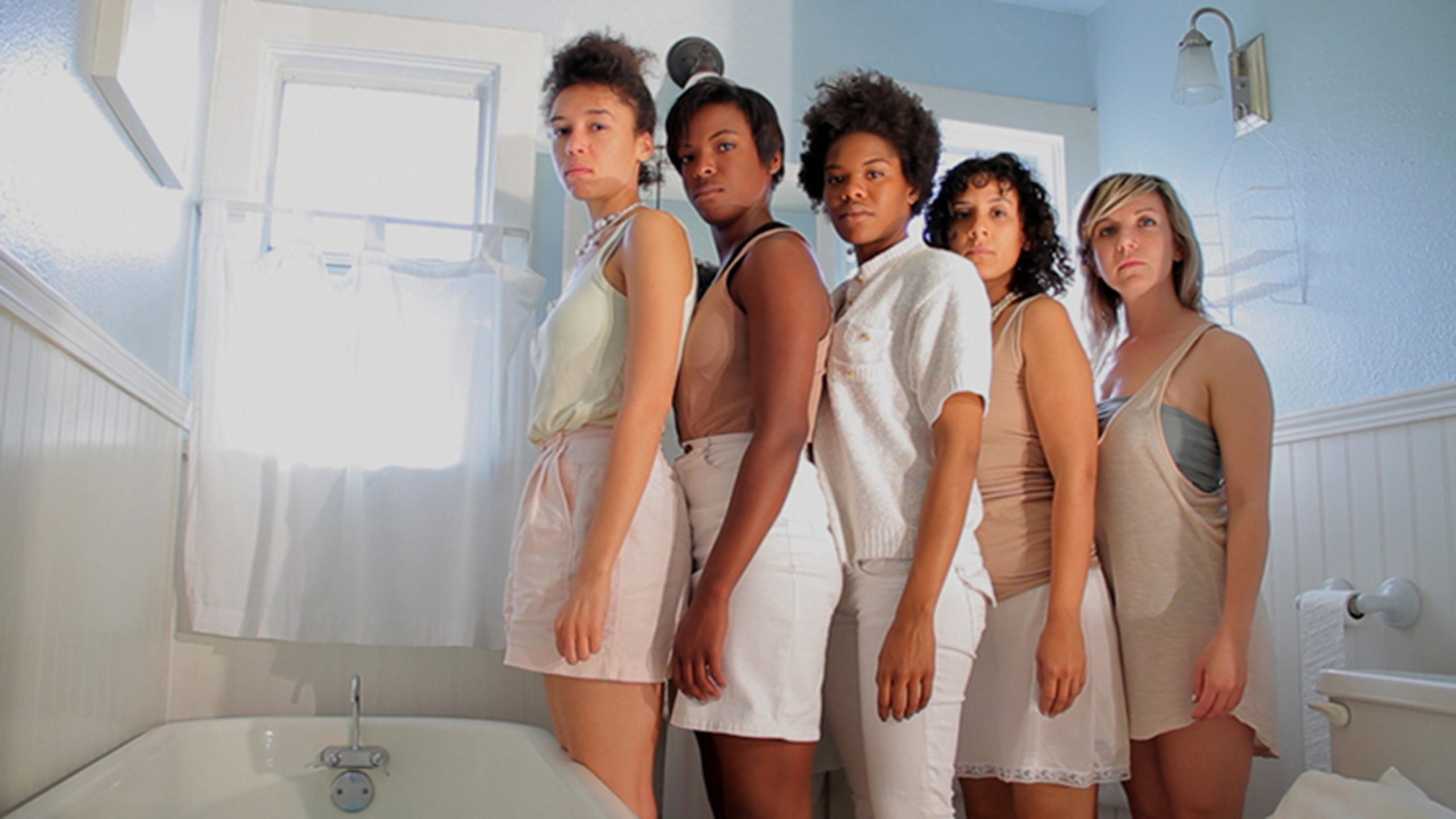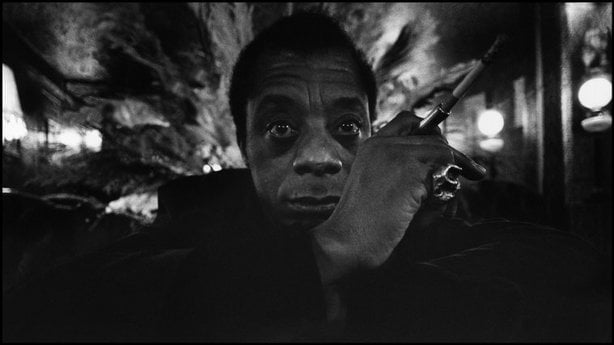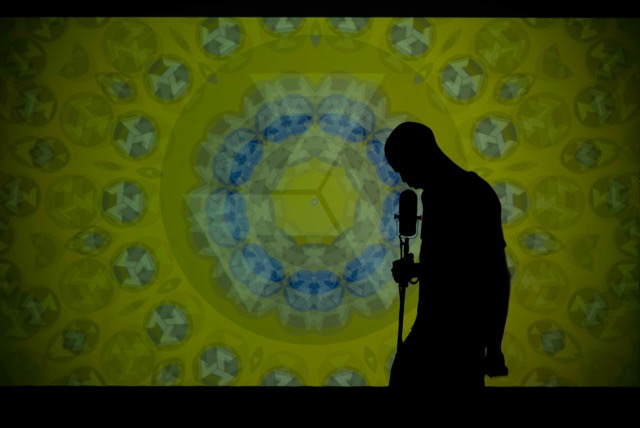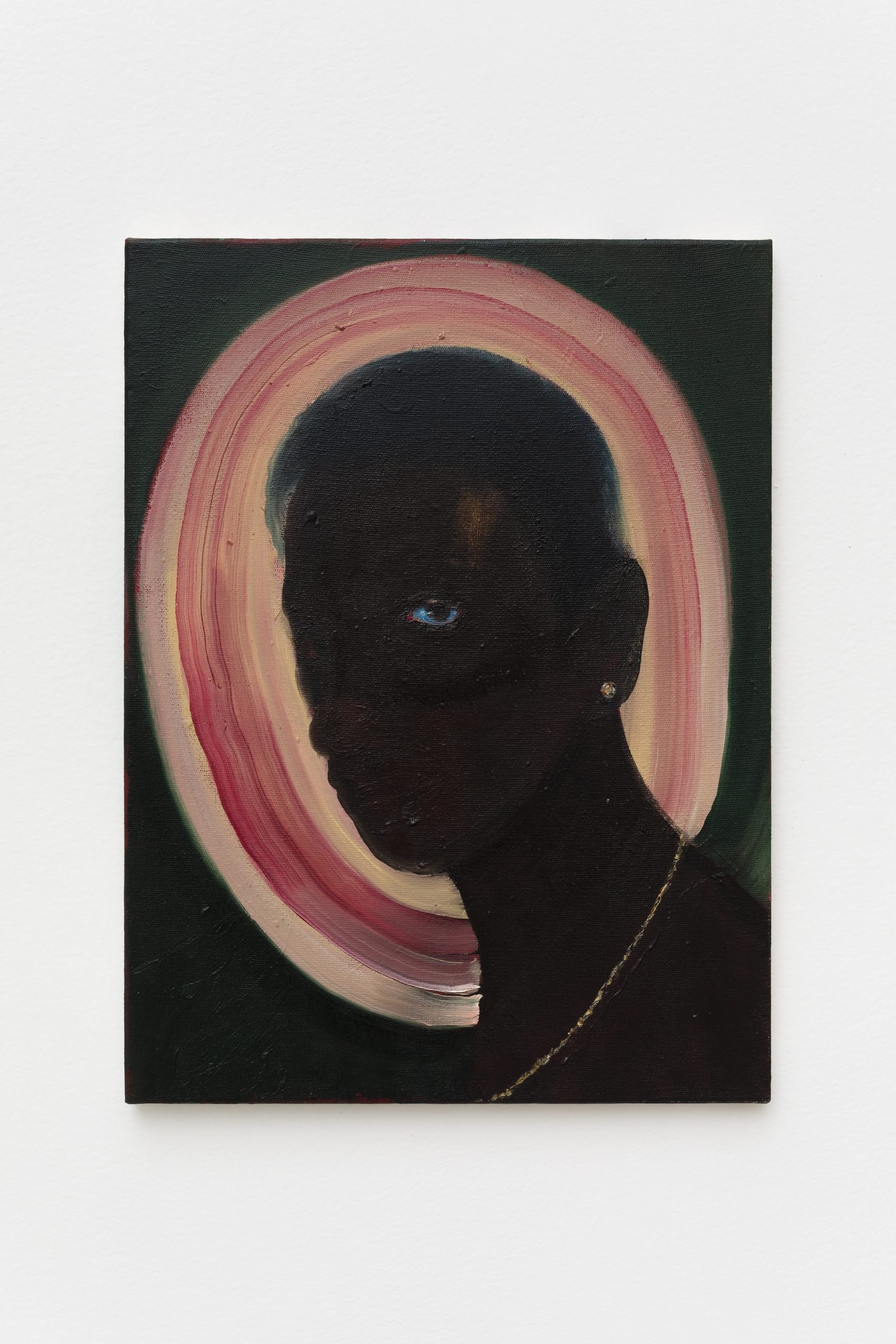
© » KADIST
Antonio Obá
Figura Noturna II by Antônio Obá depicts a dark figure, surrounded by a halo of light set against an even darker background. He has one eye open, which stares intensely at the viewer. The image relates to a theme recurrent in the artist’s practice: the figure lying awake at night.

© » KADIST
Helina Metaferia
By Way of Revolution is a series of works by Helina Metaferia that addresses the inherited histories of protest that inform contemporary social movements. In the project, Metaferia works intrinsically with female descendants of prominent historical black activists to produce video art; with women of color organizations to produce socially engaged work; with “radicalism” archives and performance stills to produce works on paper and tapestries; and with museum, gallery, and public spaces to produce participatory performances. The Call is an ongoing video project of performances by descendants of prominent civil rights activists across the United States.

© » KADIST
Jes Fan
Jes Fan’s video work Xenophoria , as opposed to the term ‘xenophobia’, refers to a love of the foreign and is inspired by the name of a mysterious species of aquatic carrier shell. This creature, Xenophora pallidae, calcifies free-floating objects in the water to its spine, bringing foreign bodies into its own structure. Likewise, Xenophoria stages a delirious search for the melanin pigment – the molecule responsible for skin color – as it manifests in both human and non-human bodies.

© » KADIST
Jarrett Key
Jarrett Key’s practice combines several modes of production into a single frame, incorporating sculpture, painting, and performance. Dancing Free I , painted in wet cement, like a fresco, is part of a current series of paintings titled Leaving the City , which depicts Black people they know in lush, pastoral landscapes. Raised in rural Alabama, Key’s series grew out of a few experiments conducted with visitors to their studio.

© » KADIST
Frida Orupabo
The archival images used by Frida Orupabo in her collages trace stereotyped representations of race, gender, sexuality and violence. Her works are developed through a process of decontextualization of such imagery, layering and recomposing, playing with new narratives. In this work she focuses on memory and what might be triggered in the viewer.
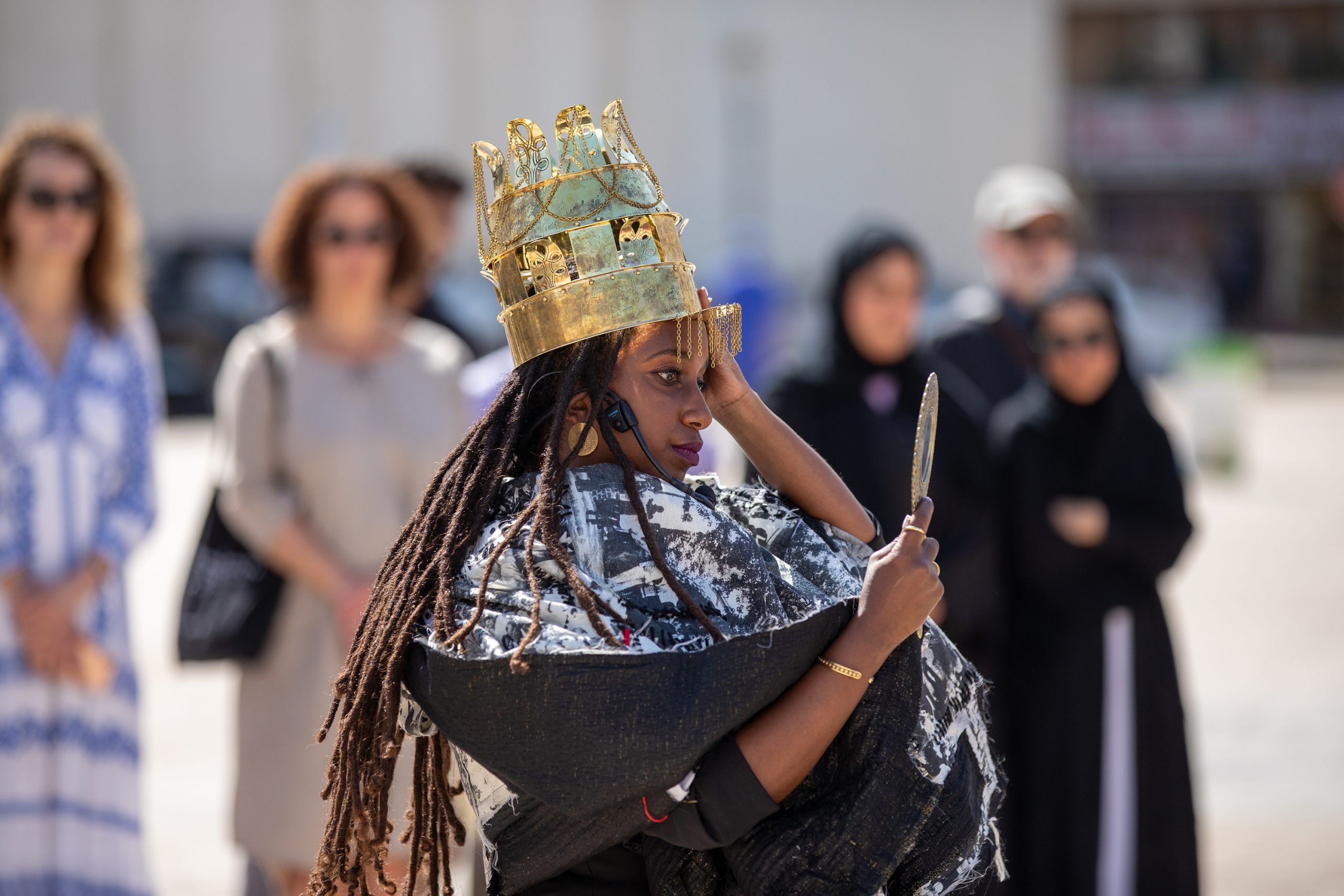
© » KADIST
Helina Metaferia
By Way of Revolution is a series of works by Helina Metaferia that addresses the inherited histories of protest that inform contemporary social movements. In the project, Metaferia works intrinsically with female descendants of prominent historical black activists to produce video art; with women of color organizations to produce socially engaged work; with “radicalism” archives and performance stills to produce works on paper and tapestries; and with museum, gallery, and public spaces to produce participatory performances. Tapestry (Gewel) (2023) is one of a series of tapestries that are all subtitled with names of traditional storytellers from across the African continent.

© » KADIST
Adriana Bustos
El mar y sus múltiples afluentes (The Sea and its Multiple Tributaries) builds on the concept of trafficking that Adriana Bustos has been exploring over the last decade. The piece represents an apocryphal river and illustrates the routes of the slave trade between the coasts of Africa, Europe, and South America, departing from the Congo River (once called Zaira), and arriving at Río de la Plata, the main river in Buenos Aires that divides Argentina from Uruguay. The work collapses time and space, placing the coasts of colonial empires across the colonies where slaves were taken.

© » KADIST
Alicia Henry
Out of simple materials, Alicia Henry creates enigmatic, somewhat troubled characters, which reveal her interest in the complexities and the contradictions surrounding familial relationships. The artist probes societal differences and how these variations affect individual and group responses to themes of beauty, the body, and broader issues of identity. Untitled explores these themes and addresses the processes through which women navigate such issues.

© » KADIST
Dread Scott
In conjunction with his first NFT sale of White Male Dread Scott made and circulated a poster titled Whites For Sale . The indigo-colored poster advertises a “cargo” of newly arrived white slaves, from which one will be for sale. This work is adapted from a 1796 slave sale announcement poster that is now archived in the library at Columbia University, NYC.

© » KADIST
Leila Weefur
Leila Weefur’s two-channel video installation Between Beauty & Horror focuses on the sensorial and somatic experiences that give Blackness a distinct and inherently racialized materiality. The narrative structure of Between Beauty & Horror operates on dream logic; interspersed among the dream sequences of the video are moments that fluidly shift between violence, playfulness, tenderness, and of course, beauty and horror. Weefur’s work poses many questions about the Black experience, but it offers no easy answers.

© » KADIST
Toyin Ojih Odutola
Drawing & Print (Drawing & Print)
As she traces the same shape again and again, Ojih Odutola’s lines become darker and deeper, sometimes pushed to the point where their blackness becomes luminous. Set against a blank white background, as in Untitled (2015), Ojih Odutola’s figures are stark, resolute in their darkness. The surface of her subject’s skin becomes ribbon-like, lines weaving across the contours of their head and neck.

© » KADIST
Helina Metaferia
By Way of Revolution is a series that addresses the inherited histories of protest that inform contemporary social movements. In the project Metaferia works intrinsically with female descendants of prominent historical black activists to produce video art; with women of color organizations to produce socially engaged work; with “radicalism” archives and performance stills to produce works on paper and tapestries; and with museum, gallery, and public spaces to produce participatory performances. Tapestry (Gewel) is one of a series of tapestries that are all subtitled with names of traditional storytellers from across the African continent.

© » KADIST
Wu Tsang
Poet and writer Fred Moten gesticulates joyously during Girl Talk by artist Wu Tsang. Moten is dressed in light drag—a studded cloak hanging loosely over his body, his eyes and mouth adorned with makeup. Filmed in a sunlit garden, Moten whirls in slow motion to the trickle of a lion-headed water fixture and the acapella rendition of jazz standard Girl Talk by singer Josiah Wise.

© » KADIST
Jota Mombaça
The performance title A Gente Combinamos De Não Morrer (BANDEIRA #1) / Us Agreed Not To Die (FLAG #1) is taken from a short story by Brazilian writer Conceição Evaristo, whose work addresses violence, resilience, and necropolitics with an Afro-diasporic lens. This artwork by Jota Mombaça articulates connections between black and trans people’s challenges and struggles. Mombaça points out that an ongoing genocide of these minorities underscores the established power structures, and their resistance is to survive.

© » KADIST
Mike Cloud
In his series Hanging and Beheading Paintings Mike Cloud speaks to the suffering of a series of named (and occasionally unnamed) individuals, addressing their trauma within the language of abstraction. They offer the viewer an aesthetic account of individuality, death, and the empathic space of communion in absence via avant-garde portraiture, unbound by the rules of anatomy or even representation, but instead by purely expressive compositional and aesthetic goals. Untitled (Beheading) embraces the individual subjectivities of notable and mundane contemporaries — from pop stars to serial killers — in cryptic ways, connected only by the physical circumstances of their deaths.
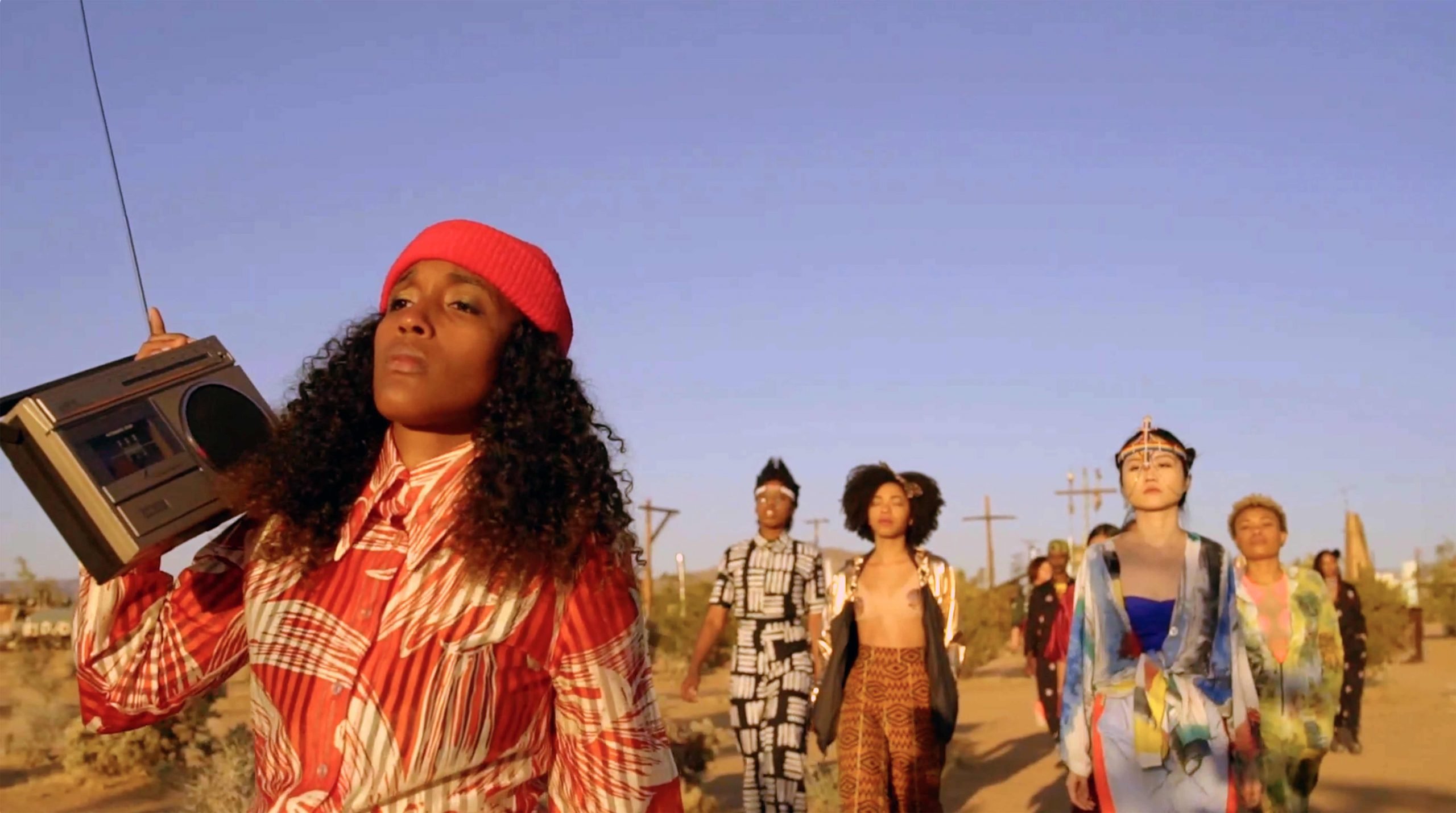
© » KADIST
Cauleen Smith
Set to the iconic and spiritual music of Alice Coltrane’s Turiyasangitananda (1937–2007), Cauleen Smith’s film Sojourner travels across the US to visit a series of sites important to an alternative and creative narrative of black history. While the approach may appear spiritual, it is more futuristic (Afrofuturism and Radical Jazz) than religious. Smith is interested in using the individual stories of “those who have formed their own solutions” as a reconstructive and healing lens for considering the past.

© » KADIST
Amol k Patil
The title of the performance video work Impression by Amol k Patil refers to an Indian tradition. During a Hindu or Muslim weddings, all the inhabitants of the chawl (very modest buildings) cover their chests, arms, and feet with henna. For this work the artist covered his chest with temporary henna tattoos before applying Fervicol, a synthetic resin adhesive.
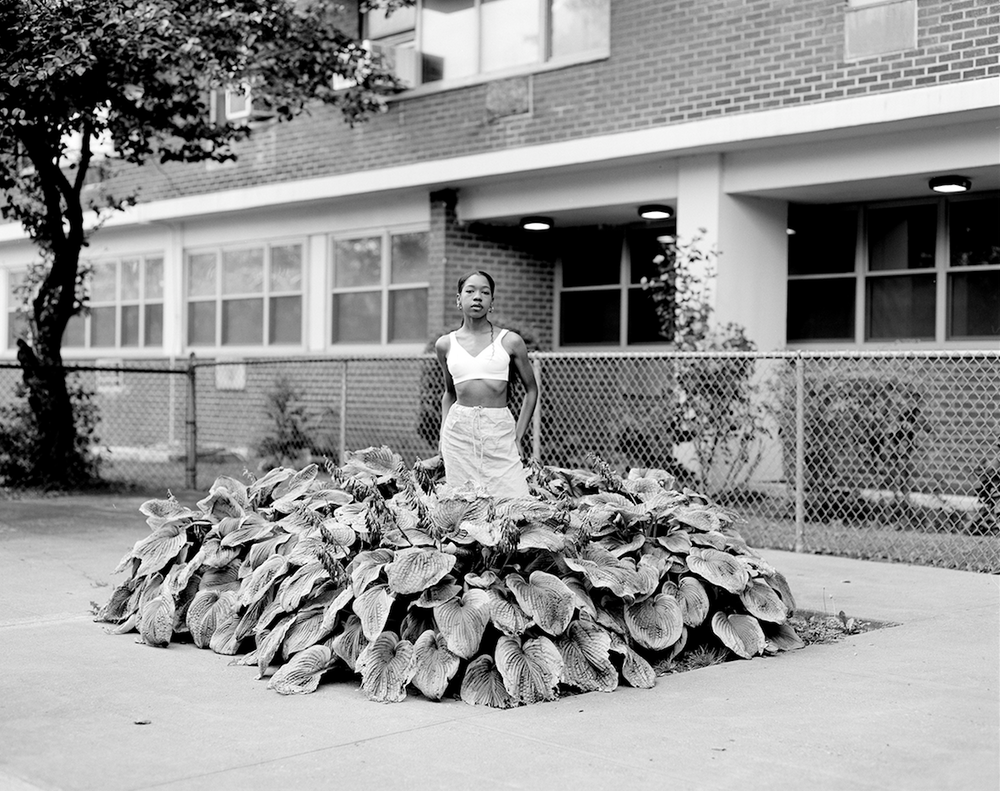
© » KADIST
Chanell Stone
Natura Negra , which translates to “Black Nature”, is a black-and-white photographic series by Chanell Stone that explores the connection between the Black body and nature within man-made environments. The series features a compilation of environmental portraits staged in urban “forests” that explore the notion of “holding space” within one’s immediate environment. Each image depicts an effort to reclaim and reconnect with the earth, even in spaces of compartmentalized nature like backyard gardens, flora intended as urban beautification, and lush public spaces.

© » KADIST
Matthew Angelo Harrison
In Hole #1 a zebra scull stands in as a representation of Africa, while the plexiglass box and the hole made through it represent the inaccessibility of that culture to African-Americans.

© » KADIST
Doreen Lynette Garner
Known But to God: The Dug Up, Dissected, and Disposed for the Sake of Medicine by Doreen Lynnette Garner is a small, suspended sculpture composed of glass, silicone, steel, epoxy putty, pearls, Swarovski crystals, and whiskey. At once attractive and repulsive, the sculpture combines objects of adornment with what appears to be viscera. The sculpture’s curious delicacy evokes a ritualistic catharsis, in response to persistent forms of medical racial violence and objectification for Black people in America and around the world.

© » KADIST
Fred Wilson
Fred Wilson’s flag paintings document the 20th century history of African people, indexing the period of liberation from colonialism. As the majority of African flags were created during the 1950s and 60s, they were intended to reflect a so-called ‘modern’ aesthetic and ideology. Many African flags maintain the typical flag tropes such as stripes, stars, birds, and blocks of primary and secondary colors; green to represent the land; blue to symbolize the ocean or sky; and red to recall the violence that occured in the pursuit of liberty.

© » KADIST
Uche Okpa-Iroha
In the fictional narrative Plantation Boy (2012), Irhoa places himself inside imagery from Francis Ford Coppola’s seminal The Godfather (1972). Inflected with humor, the series examines race in society. According to the artist, the 40 images collectively question structures of power and the hegemony of Western culture.

© » KADIST
Daniela Ortiz
In her work, Maids Room (2012) which is part of a series, Daniela Ortiz undertakes an architectural analysis of the houses belonging to the upper class of Lima. Her research highlights the position of ‘service architecture’, the vital space given to the domestics. The project offers an analysis of this room, its size and its position in relation to the rest of the house.

© » KADIST
Javier Castro
In the video Negro sobre Negro (Black on Black) all we see is a completely black screen on a monitor that is recessed into a wall, also painted black. Gradually, the face of a man becomes visible as he steps out of the darkness and closer to the camera. As suggested by Castro, the color of this man’s skin allows him to pass unnoticed perhaps literally, but also metaphorically as he alludes with certain humor to the iconic work Black Square by Suprematist artist Kazimir Malevich, often referred to as the “zero point of painting” in Western art-historical discourses.

© » KADIST
Javier Castro
In the video Blanco sobre Blanco (White on White) , we see a white man appearing in a white screen embedded into a white wall— alluding to Malevich’s White on White series. Analogously, in Castro’s related work Negro sobre Negro (Black on Black) all we see is a completely black screen on a monitor that is recessed into a wall, also painted black. Gradually, the face of a man becomes visible as he steps out of the darkness and closer to the camera.

© » KADIST
Tracey Rose
“Maqe II” is at first glance a romantic image of three diaphanous angels hovering in the luminous sky over a South African township. A closer inspection reveals that the apparition is the appropriated figure of Marie Antoinette from the artist’s Ciao Bella series (2001) with the addition of a butchered cake. The figure is Rose herself dressed in costumed made of trash bags holding a haunting paper mâché mask.

© » KADIST
Danielle Dean
In True Red Ruin (Elmina Castle) , Danielle Dean uses archival documents to re-imagine colonial history from the 1400s, while also referencing her own personal history. Elmina Castle was built in Ghana in 1482 as a Portuguese trading post, and later became a key location in the Atlantic slave trade. Dean’s re-enactment is set in an affordable housing community in Houston, Texas, where her half-sister Ashstress Agwunobi lives, and who also performs the role of “the native.” Dean plays the role of “the prospector,” who plans to “colonize” her sister’s home by bringing a wobbly red cardboard castle into the grounds of the community and getting the locals to help build it and work there.

© » KADIST
Marie Voignier
“Na China” means “In China” in Igbo language. Marie Voignier’s film NA CHINA! focuses on the African women communities who have emigrated to Guangzhou, in the southeast of China.

© » KADIST
Kameelah Janan Rasheed
Calvin Warren calls it an ‘ontological equation’/or methods of estimating the odds to rise in the coming centuries by Kameelah Janan Rasheed is part of A Casual Mathematics , a series of interpretive art diagrams, which revisit W. E. B. Du Bois’s iconic data portraits in The Exhibit of American Negroes . This was a landmark exhibit within the Palace of Social Economy at the 1900 World’s Fair in Paris that demonstrated the progress of Black Americans through the visual display of quantitative sociological information.

© » KADIST
Yan Xing
The title of this series – Two videos, three photographs, several related masterpieces and American art – is paradoxical, suggesting the work is conceived in relation to its medium and a situation in art history and the region of the world in which it was made. Paradoxical but in the end, often true of the way in which art history is written. The presence of black men and the term “American Art” brings us back to Robert Mapplethorpe’s Black Book .
Helina Metaferia
Helina Metaferia is an interdisciplinary artist working across collage, assemblage, video, performance, and social engagement...
Javier Castro
Javier Castro was born in the in the neighbourhood of San Isidro in the heart of Habana Vieja, Cuba, where he lives and works...
Hank Willis Thomas
- location: New York, New York
- year born: 1976
- gender: male
- nationality: American
- home town: Plainfield, New Jersey
Adriana Bustos
Adriana Bustos creates a narrative discourse through installation, video, photography and drawing, in which her reflections on prevailing social, political or religious oppression appear in non-linear interpretations of history...
Marie Voignier
Marie Voignier’s work presents a subtle criticism of the transitory status of action within the social and political elds...
Kameelah Janan Rasheed
Kameelah Janan Rasheed is a radical self-publisher, and pamphleteer based in Brooklyn...
Cauleen Smith
Cauleen Smith is an artist and filmmaker whose approach has been shaped by the discourse of mid-twentieth-century experimental film — including structuralism, third world cinema, and science fiction...
Tracey Rose
Tracey Rose, (b...
Mike Cloud
Artist Mike Cloud builds irregularly shaped canvases and frames into unique sculptural objects...
Fred Wilson
- location: Bronx, United States
- year born: 1954
- gender: male
- nationality: American
Uche Okpa-Iroha
Uche Okpa Iroha documents the living conditions of those on the margins of society...
Chris Ofili
- location: Manchester, United Kingdom
- year born: 1968
- gender: male
- nationality: British
Frida Orupabo
A central element of Frida Orupabo’s practice is her digital archive, storing images from both the media and from her personal life on her Instagram account, later transforming them into analogue collages...
Yan Xing
- location: Beijing, China
- year born: 1986
- gender: male
- nationality: Chinese
- home town: Chongqing, China
Toyin Ojih Odutola
Though born in Nigeria, artist Toyin Ojih Odutola was raised largely in the United States, living in Alabama, California, and now New York...
Daniela Ortiz
In order to reveal and critique hegemonic structures of power, Daniela Ortiz constructs visual narratives that examine concepts such as nationality, racialization, and social class...
Matthew Angelo Harrison
Detroit’s Matthew Angelo Harrison works at the intersection of sculpture and technology, building his own 3D printers (which rise to the status of sculpture), and using these creations to formulate others...
Jarrett Key
Jarrett Key’s work addresses their concerns about the state of their freedom in America...
Kota Ezawa
- location: San Francisco, California
- year born: 1969
- gender: male
- nationality: German
- home town: Cologne, Germany
Dread Scott
Dread Scott is an interdisciplinary artist who for three decades has made work that encourages viewers to re-examine cohering ideals of American society...
Chanell Stone
Chanell Stone’s practice explores what she describes as the “re-naturing” of the Black body to the American landscape—an act that aims to complicate and sublimate the history of American slavery into a reimagined relationship between African Americans and the earth...
Jes Fan
Jes Fan is a Brooklyn-based artist born in Canada and raised in Hong Kong...
Wu Tsang
Wu Tsang’s work is often framed in terms of her identity as a trans woman of color...
Claudia Joskowicz
Claudia Joskowicz is a video and installation artist working at the intersection of landscape, history, and memory...
Amol k Patil
Interested in vernacular theater and performance, Amol k Patil works within family tradition: his grandfather was an interpreter and a poet (Powada Shahir, a troubadour telling epic stories as he went from one village to another), and his father was an avant-garde playwright, who addressed issues, such as the devastating effects of immigration and its traumas through absurd situations in his plays...
Danielle Dean
Danielle Dean creates videos that use appropriated language from archives of advertisements, political speeches, newscasts, and pop culture to create dialogues to investigate capitalism, post-colonialism, and patriarchy...
Doreen Lynette Garner
Doreen Lynette Garner’s practice examines the histories and enduring effects of racial violence in the United States...
Leila Weefur
Leila Weefur is an artist, writer, and curator whose practice considers the complexities of phenomenological Blackness through video, installation, printmaking, and lecture-performances...
Juan Capistran
- location: Los Angeles, California
- gender: male
- nationality: Mexican American
- home town: Guadalajara, Mexico
Alicia Henry
Alicia Henry creates work that departs from Western ideas of portraiture, which denote a likeness or a construction of a subject...
-
2000-2009
Tracey Rose
2001“Maqe II” is at first glance a romantic image of three diaphanous angels hovering in the luminous sky over a South African township...
Kota Ezawa
2002The Simpson Verdict is a three-minute animation by Kota Ezawa that portrays the reading of the verdict during the OJ Simpson trial, known as the “most publicized” criminal trial in history...
Juan Capistran
2005White Minority , is typical of Capistran’s sampling of high art genres and living subcultures in which the artist subsumes an object’s high art pedigree within a vernacular art form...
Javier Castro
2008In the video Negro sobre Negro (Black on Black) all we see is a completely black screen on a monitor that is recessed into a wall, also painted black...
Fred Wilson
2009Fred Wilson’s flag paintings document the 20th century history of African people, indexing the period of liberation from colonialism...
-
2010-2019
Amol k Patil
2012The title of the performance video work Impression by Amol k Patil refers to an Indian tradition...
Uche Okpa-Iroha
2012In the fictional narrative Plantation Boy (2012), Irhoa places himself inside imagery from Francis Ford Coppola’s seminal The Godfather (1972)...
Daniela Ortiz
2012In her work, Maids Room (2012) which is part of a series, Daniela Ortiz undertakes an architectural analysis of the houses belonging to the upper class of Lima...
Hank Willis Thomas
Drawing & Print
2012(Drawing & Print) Thomas’ lenticular text-based works require viewers to shift positions as they view them in order to fully absorb their content...
Javier Castro
2014In the video Blanco sobre Blanco (White on White) , we see a white man appearing in a white screen embedded into a white wall— alluding to Malevich’s White on White series...
Claudia Joskowicz
2014Los rastreadores is a two-channel video by Claudia Joskowicz narrating the story of a fictitious drug lord, Ernesto Suarez, whose character is based on the well-known Bolivian drug dealer, Roberto Suárez...
Hank Willis Thomas
2014South Africa Righteous Space by Hank Willis Thomas is concerned with history and identity, with the way race and ‘blackness’ has not only been informed but deliberately shaped and constructed by various forces – first through colonialism and slavery, and more recently through mass media and advertising – and reminds us of the financial and economic stakes that have always been involved in representations of race....
Toyin Ojih Odutola
Drawing & Print
2015(Drawing & Print) As she traces the same shape again and again, Ojih Odutola’s lines become darker and deeper, sometimes pushed to the point where their blackness becomes luminous...
Matthew Angelo Harrison
2015In Hole #1 a zebra scull stands in as a representation of Africa, while the plexiglass box and the hole made through it represent the inaccessibility of that culture to African-Americans....
Doreen Lynette Garner
2017Known But to God: The Dug Up, Dissected, and Disposed for the Sake of Medicine by Doreen Lynnette Garner is a small, suspended sculpture composed of glass, silicone, steel, epoxy putty, pearls, Swarovski crystals, and whiskey...
Danielle Dean
2017In True Red Ruin (Elmina Castle) , Danielle Dean uses archival documents to re-imagine colonial history from the 1400s, while also referencing her own personal history...
Frida Orupabo
2018The archival images used by Frida Orupabo in her collages trace stereotyped representations of race, gender, sexuality and violence...
Adriana Bustos
2018El mar y sus múltiples afluentes (The Sea and its Multiple Tributaries) builds on the concept of trafficking that Adriana Bustos has been exploring over the last decade...
Leila Weefur
2018Leila Weefur’s two-channel video installation Between Beauty & Horror focuses on the sensorial and somatic experiences that give Blackness a distinct and inherently racialized materiality...
Jota Mombaça
2018The performance title A Gente Combinamos De Não Morrer (BANDEIRA #1) / Us Agreed Not To Die (FLAG #1) is taken from a short story by Brazilian writer Conceição Evaristo, whose work addresses violence, resilience, and necropolitics with an Afro-diasporic lens...
Cauleen Smith
2018Set to the iconic and spiritual music of Alice Coltrane’s Turiyasangitananda (1937–2007), Cauleen Smith’s film Sojourner travels across the US to visit a series of sites important to an alternative and creative narrative of black history...
Helina Metaferia
2019By Way of Revolution is a series of works by Helina Metaferia that addresses the inherited histories of protest that inform contemporary social movements...
Alicia Henry
2019Out of simple materials, Alicia Henry creates enigmatic, somewhat troubled characters, which reveal her interest in the complexities and the contradictions surrounding familial relationships...
Chanell Stone
2019Natura Negra , which translates to “Black Nature”, is a black-and-white photographic series by Chanell Stone that explores the connection between the Black body and nature within man-made environments...
Kameelah Janan Rasheed
2019Calvin Warren calls it an ‘ontological equation’/or methods of estimating the odds to rise in the coming centuries by Kameelah Janan Rasheed is part of A Casual Mathematics , a series of interpretive art diagrams, which revisit W...
-
2020-2029
Antonio Obá
2020Figura Noturna II by Antônio Obá depicts a dark figure, surrounded by a halo of light set against an even darker background...
Jarrett Key
2020Jarrett Key’s practice combines several modes of production into a single frame, incorporating sculpture, painting, and performance...
Mike Cloud
2020In his series Hanging and Beheading Paintings Mike Cloud speaks to the suffering of a series of named (and occasionally unnamed) individuals, addressing their trauma within the language of abstraction...
Dread Scott
2022In conjunction with his first NFT sale of White Male Dread Scott made and circulated a poster titled Whites For Sale ...
Helina Metaferia
2023By Way of Revolution is a series of works by Helina Metaferia that addresses the inherited histories of protest that inform contemporary social movements...
Helina Metaferia
2023By Way of Revolution is a series that addresses the inherited histories of protest that inform contemporary social movements...


